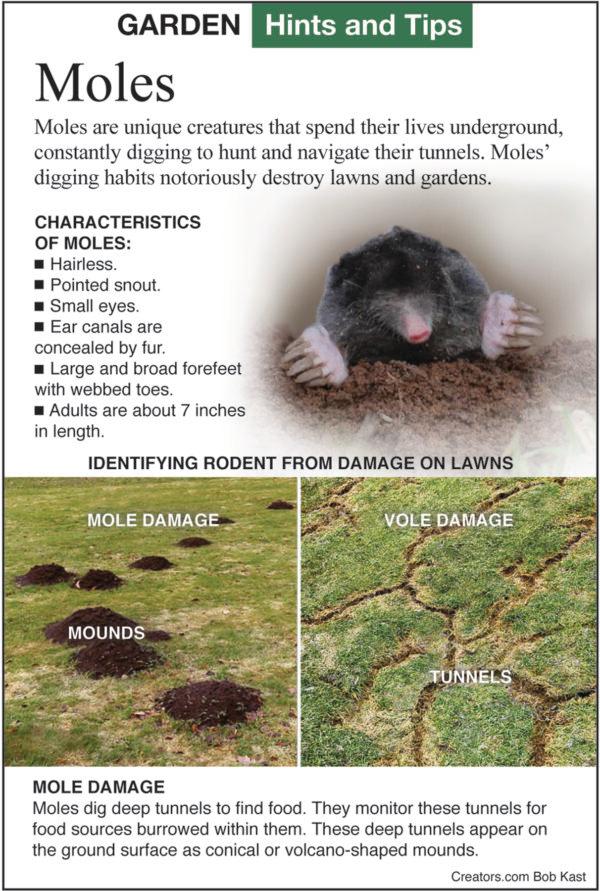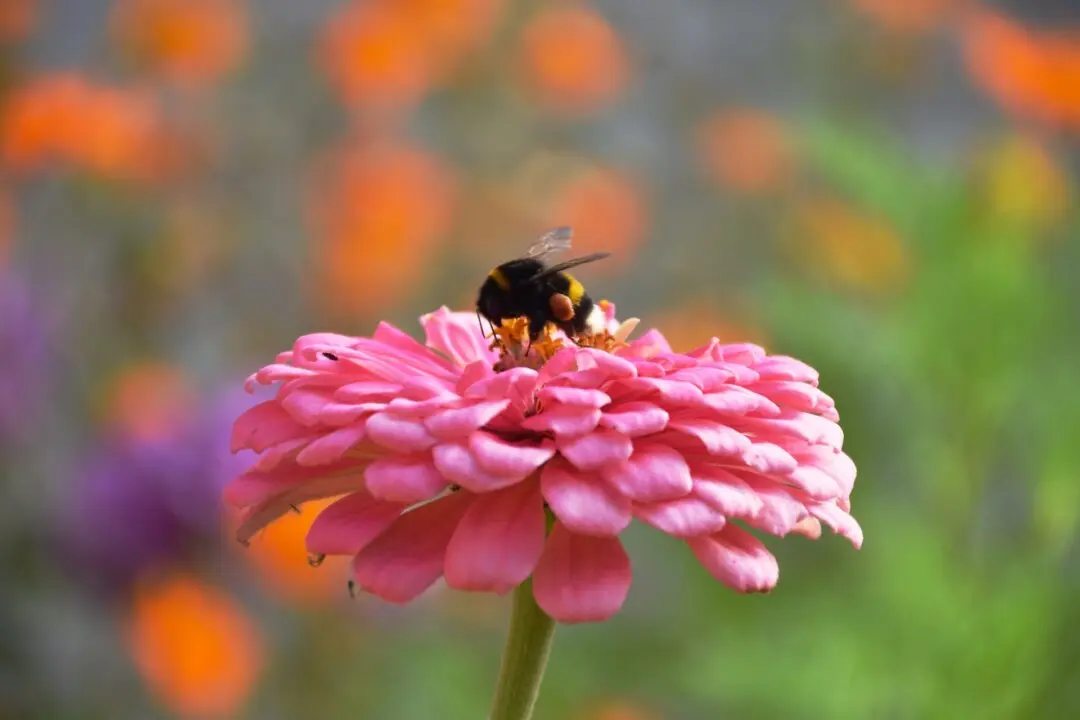Q: Please do an article on how to get rid of moles. I have lived for 20 years at my home and never had a problem. This spring, I paid a wildlife person who only caught one mole. I sprayed mole repellent and also put down grub control. My yard now has many low spots from the damage they caused.
A: Mole tunnels are often found near the surface of the lawn in spring and fall. This is when the rains soften the soil and make it easier for the mole to create tunnels. Moles have two types of tunnels. Deep tunnels are used for housing during hot and cold seasons, and shallow ones are used for feeding. The deep ones are used to connect shallow ones, and the extra soil from a deep one is used to make volcano-shaped mounds.
Like most predators, moles follow their food. They primarily eat worms but will eat insects that come their way. As the food source is consumed, they must move around to new areas to stay alive. They will also move (at least temporarily) when they are disturbed. Because they don’t stay in one place for long, virtually any product that says it gets rid of moles will work only in the eyes of someone not paying attention to the whole situation for the long term. True mole-movement behavior is based on food supplies, soil moisture, seasonal changes, and the mole’s territorial behavioral patterns. Mole prevention products that are designed to work on the senses of smell, taste, or hearing are often not effective in the long term against moles.

Grub control has little effect on moles because grubs are not a big part of the mole’s diet. Since worms are the major portion of their diet and we often want worms in the lawn, trying to get rid of their food supply is not the answer.
Overwatering a lawn can cause the soil to hold too much water and not enough air. This will cause worms and other animals to move closer to the surface. The soft, moist soil is also better for the moles. Reducing the amount and frequency of waterings can reduce the damage to lawns from moles.
There are poisons that will kill moles, but one must be careful to not allow the product to harm other animals.
Traps are a safer solution to moles. Not everyone will have the heart to kill them, and there are traps that can catch them alive. Check your local regulations for live trapping, because you may not have any place to legally take them for release.
Trap placement is critical. They must go in a shallow tunnel that is currently active. Look for a tunnel that follows a straight line from one mound to another. Flatten a section of tunnel, and wait for a day to see if it is raised back up, indicating that it is an active tunnel. Follow the directions for the trap.
In spite of all the problems a mole can cause to a lawn, they are very interesting animals. There are six species in North America, but only three can typically damage lawns. They are easily identified by large paddle-like front feet, tiny eyes, and soft, velvety fur. The typical mole weighs about the same as a quarter-pound hamburger, but it will eat about 50 pounds of worms and insects each year.
Besides feet designed for digging, they have a bone and muscle structure that allows them to create a lateral force about 30 times their weight so that they can create tunnels by smashing the soil to the sides of the tunnel. In good topsoil, they can dig a tunnel at the rate of about 20 feet per hour, and once it is done, they can run through the tunnel faster than 80 feet per minute. Moles have another design feature for this underground environment that has low oxygen levels. Compared with above-ground mammals of similar size, they have twice as much blood and hemoglobin in their blood.
As for your lawn, most tunnels can be collapsed back into shape with the gentle use of a lawn roller. Water and fertilize the whole lawn as needed to bring it all back to full health.
Email questions to Jeff Rugg at [email protected]. To find out more about Jeff Rugg and read features by other Creators Syndicate writers and cartoonists, visit the Creators Syndicate website at Creators.com. Copyright 2020 Jeff Rugg. Distributed by Creators Syndicate.





